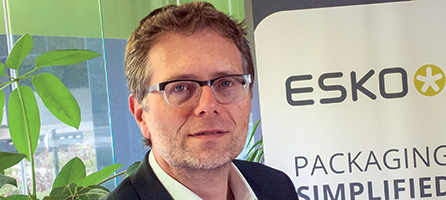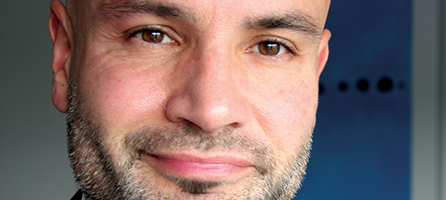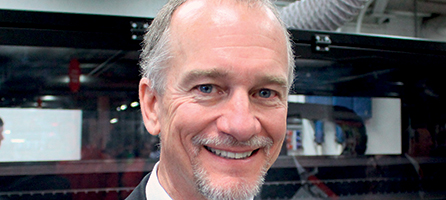
Daphne Mertens, marketing and communications manager, Summa
Over many years of experience in the sign-making market, Summa has always focused on customers and has always strived to open up new markets. Customers’ feedback, questions, and remarks are worth evaluating and considering because the better any company knows its customer, the better it can advise them and develop a long-lasting relationship, which will help strengthen loyalty for future business opportunities.
One question, frequently asked by customers is why it is worth investing in a dedicated flatbed system instead of a router/laser cutter. Besides the obvious price-related argument, that a laser cutter is more expensive, a major advantage of a flatbed system is its versatility, enabling users to process a wide range of materials and create a vast array of applications, which will appeal to many different markets. Laser cutters, however, are focused on a limited number of applications.
Moreover, many substrates are not laser cut-friendly and may not have the finished edge appearance you might expect from die-cutting. On top of that, laser cutters need exhaust systems to deal with the sometimes-hazardous fumes.

Especially for a start-up signage business that wants to reach a large market, a dedicated flatbed system will do the job for many applications”
Other than that, most router/laser systems use after-market print and cut cameras, resulting in a poorer print and cut workflow integration, whereas a flatbed cutter is much more flexible towards applications, allowing for a custom-tailored machine to fit specific workflows perfectly.
Another advantage of flatbed cutters is the presence of a multi-module tool holder, assuring an easier and faster switch of tools between the cutting, routing, and creasing of materials. Automatic tool recognition, combined with digital and mechanical depth and/or pressure control, ensures precision cutting on a wide variety of materials.
So, especially for a start-up signage business that wants to reach a large market, a dedicated flatbed system will do the job for many applications. But even an experienced sign-maker will rather opt for a sturdy, flexible, and versatile flatbed system than the expensive, less versatile, and often complex laser system.
Meeting requirements

Jan De Roeck, director solutions management, Esko
In essence, we are comparing two tools that will both do the job. However, with a closer look, differences stemming from the origin of the tools become obvious. A CNC router has been developed for other industrial applications prior to being repurposed for cutting carton board.
An Esko flatbed cutting and creasing table has been designed from day one with the challenges of the packaging and display industries in mind. As a long-standing global supplier in these markets, Esko has built a lot of expertise in this domain. Subtle differences in the machine design account for functional differences in the applications produced on the device. For short run packaging and display production, a flatbed cutting table is a much better match than a CNC router. The latter also has a higher total cost of ownership. In the end, it is all about having the right equipment to meet production requirements and leave some profit margin as well.

An Esko flatbed cutting and creasing table has been designed from day one with the challenges of the packaging and display industries in mind”
Esko has always focused on the packaging, signage, and display segments, and today, our knowledge and experience make the difference. Our aim is to continuously deepen our expertise in flatbed cutting and not be distracted from that. Esko has taken time out to listen to its customers; our Kongsberg cutting tables help companies streamline finishing lines and take control of the entire production process.
At the recent Drupa exhibition, Esko showed a range of innovations for the digital finishing shopfloor, focusing on removing non-value-added time. Think about it: what exactly is non-value added time in this context? It is the time the knife is not cutting any material for any given reason. The more we eliminate the reasons for having the knife in the stand-by position, the more sellable material the table will produce. It is nothing more than applying the principles of ‘lean’ production.
Unparalleled flexibility

Paul Andrade, general manager, AG/CAD
Investing in a dedicated flatbed digital cutter is all about versatility. AG/CAD’s DYSS cutter and KASEMAKE software combination gives the end user unparalleled flexibility. The DYSS range offers more tools and applications than a standard CNC router or laser. Alongside an optional high frequency, high performance router spindle, the DYSS has two tool slots for static and reciprocating heavy duty knife, kiss-cut, crease, V-cut, and rotary cut tools, amongst many others. This flexibility, along with the hundreds of resizable design templates included in the KASEMAKE software, opens up a world of opportunity for customers to enter new market segments, diversifying their business and generating new revenue streams.
Whilst a big CNC router is a good workhouse for cutting of heavy, thick materials such as wood and metal, flexibility is very limited. In contrast, our DYSS machines cut virtually all the materials that standard routers and lasers can process, but at greater speeds and with impressive finish quality; plus they can handle many more materials that these other machines struggle with.

Laser cutting is great for some materials, but not good on most paper-based media due to the discoloured edges you typically get and where creasing is poor”
Laser cutting is great for some materials, but not good on most paper-based media due to the discoloured edges you typically get and where creasing is poor. Another limitation is the dangerous gases that can be given off when lasering certain plastics, which either means you cannot use these materials at all, or, in some cases, have to fit specialist extraction systems and filtering to adhere to health and safety laws.
With the huge range of plug and play tools available, combined with a solid, robust machine platform, DYSS machines can cut much the same tough materials as a CNC—and then immediately switch to intricate jobs like kiss-cutting vinyl, trimming long banners and posters, or profile cutting rigid displayboard, honeycomb ReBoard, rigid PVC, magnet, and much more.
Furthermore, most CNC machines and lasers are fixed bed machines, so handling longer-than-bed jobs or dealing with roll media is simply not possible. The DYSS models can be equipped with conveyorised rolling beds to handle sheet and roll media, giving ultimate flexibility, with none of the drawbacks.
Equal advantages

Steve Collins, product marketing and channel manager, Agfa UK and Ireland
We find our customers will look at investing in a dedicated flatbed cutter once they have made the move into UV flatbed. It is a natural progression to be able to offer a complete solution for printing and finishing.
In many instances, the cost of these devices can be as much, if not more, than the original investment of a flatbed printer. So, for this reason, a flatbed cutter needs to be capable of cutting and milling onto a wide array of substrates, thus allowing customers to diversify in applications that allow for new opportunities. The latest cutter from Agfa, the Acorta 3120 HD, has the capability to cut substrates up to 120mm in depth allowing for an even wider range of possibilities.
For many customers, a knife/mill system is more than adequate for their requirements. Systems that combine knife and milling tools with a laser will come with an initial higher price and an ongoing maintenance cost for the laser, which will have to be justified in the return of investment calculations.

Ultimately it will come down to what is best for your type of client base and the type of work you intend to target”
Ultimately it will come down to what is best for your type of client base and the type of work you intend to target.
Both systems have advantages, so it will come down to what is right for your business at the end of the day and not just looking at the equipment as a printer or a cutter, but as a creative piece of technology that can open doors into new areas of print and finishing.
One other area to consider is workflow integration. A full workflow solution will allow the seamless connectivity from the front end through to the finishing process, thus streamlining productivity and helping cut down on costly mistakes, and wastage of valuable time and labour.
This is an area of excellence for Agfa; our wide-format workflow solution, Asanti, combines pre-flight, colour management, job tracking, image rendering for printing, and support for the cut and creasing marks for a dedicated cutter, all within the concept of a central hub. Bring everything together and you have a complete configuration from one supplier.
Your text here...